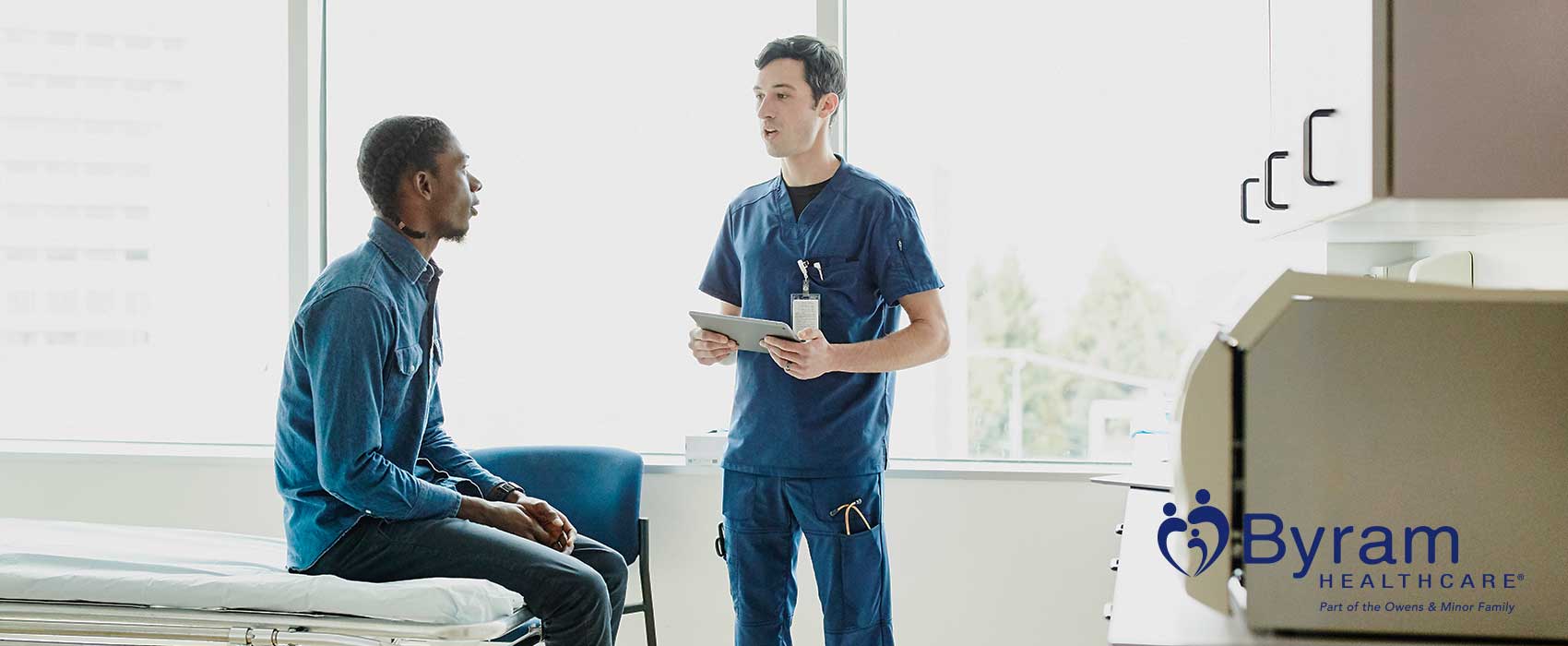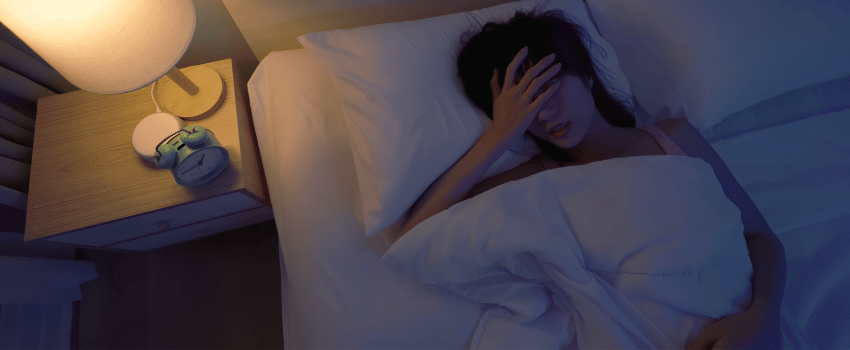
Every area on your body is at risk of experiencing trauma in some degree. One type of trauma that occurs in men is called testicular torsion. Testicular torsion is when one or both testicles rotate to a degree that twists the spermatic cord. The intensity of the twisting causes blood to flow back into the scrotum rather than through normal circulation patterns, causing restricted blood flow to surrounding areas. Testicular torsion tends to be quite painful and requires immediate medical assistance. To help better understand what to do if you experience testicular torsion, how to treat it, and potential associated complications, we’ll go into more detail regarding the question: what is testicular torsion?
What Happens in Normal Testicles?
To understand why testicular torsion can be dangerous, it’s important to consider what happens normally. The testicles, also referred to as testes, are two organs that hang in the scrotum—a protective pouch of skin. The testes sit below the penis and work to produce sperm and testosterone. To function optimally, the testes need continual blood flow, much like any other part of the body. This blood flow is supplied through the spermatic cord, which originates in a male’s abdomen. It is the only vessel that provides direct blood flow to the testes.
What Causes Testicular Torsion
If a testicle rotates several times, the blood flow can be restricted. Blood flow restriction can be anywhere from mild to severe or entirely blocked, depending on how many times the testicle rotates. The underlying cause of testicular torsion is still unknown, but many males who experience this have a genetic trait that causes their testicle to rotate freely, or “swing,” within the scrotum. This is a deformity called the “Bell Clapper” deformity. If males inherent the Bell Clapper deformity, it tends to affect both testicles, but is not a guarantee that you will experience testicular torsion. It is also extremely uncommon for both testicles to undergo torsion, especially at the same time.
Testicular torsion is rare, occurring in only about 1 in 4,000 males under the age of 25. While there are some that believe torsion occurs during or after strenuous physical activity, it can also happen while sleeping, standing, sitting, or post-injury.
Testicular torsion can occur at any age, but most commonly affects males between the ages of 12 and 18. Due to the increase of prevalence during this age range, many medical professionals believe that rapid growth of testicles and associated features during puberty play a role in testicular torsion. In certain instances, testicular torsion can even occur before birth. Another potential factor is weather. There are higher rates of testicular torsion when the weather is cold, which is why it’s sometimes referred to as “winter syndrome.”
Some risk factors that may increase your likelihood of developing testicular torsion include:
- Bell Clapper deformity
- Age
- Previous instances of testicular torsion
- Family history of testicular torsion
Symptoms of Testicular Torsion
If you experience any type of genital trauma and notice symptoms associated with the impact, it’s important that you see a urologist or medical professional as soon as possible. There are various types of genital injuries that can create long-lasting complications when not addressed. The most common signs and symptoms of testicular torsion include:
- A sudden and severe pain in the scrotum
- Swelling of the scrotum
- Changes in scrotum color
- Adnominal pain
- Nausea
- Vomiting
- A testicle that’s positioned in an unusual way—either in height or angle
- Size changes in one testicle
- Frequent urination
- Fever
If you notice any of the above symptoms, or your child expresses the presence of any symptoms, seek medical attention immediately. Testicular torsion requires emergency surgery to avoid loss of a testicle. If the blood flow remains cut off for an extended length of time, the testicle can become damaged beyond repair and require removal. By seeking prompt treatment, you can prevent severe damage or loss of the afflicted testicle.
If the pain goes away without any medical treatment, it’s still recommended that you undergo diagnostics to ensure that there are no underlying problems. In some cases, testicles can twist and then untwist on their own, which is referred to as intermittent torsion and detorsion. To make sure that this doesn’t happen again, and lead to emergency situations, preventative surgery is recommended.
Potential Complications of Testicular Torsion
Upon initial trauma, swelling of the testicle is not likely to be seen. Instead, you’ll notice that the scrotum begins to darken. Swelling, redness, nausea, and other symptoms follow this. If the blood supply is not restored within six hours, the testicle begins to atrophy and is at a higher risk of death and lasting damage. However, the degree of twisting affects how quickly a testicle gets damaged. The longer the blood supply is cut off, the lower the probability it is to be saved. Some of the more common complications of testicular torsion include:
Infection
If the testicle dies and is still attached, the afflicted area may become riddled with gangrene. This can be life threatening and spreads quickly throughout the rest of your body, which is another reason you should prioritize swift treatment in testicular torsion.
Damage to Testicle
When testicular torsion is treated, you may experience lasting damage with the testicle in the form of atrophy. This often occurs if treatment wasn’t performed quickly enough, but the testicle was able to be saved. Atrophy is when something shrinks in size and in certain instances, atrophied testicles are no longer able to produce sperm.
Death of a Testicle
Untreated testicular torsion will result in the death of a testicle. This requires surgical removal to avoid infection. To save the testicles, surgery is required within four to six hours.
In the death of a testicle, many men undergo emotional distress as the removal of one teste creates a cosmetic deformity. If this is something that bothers you, medical advancements have created testicular prosthesis to address the problem.
Infertility
When testicular torsion occurs in both testicles and they need to be surgically removed, you will become infertile. If testicular torsion only occurs in one testicle, however, you should still be able to father children. To avoid becoming infertile, undergoing surgery within six hours of occurrence is essential.
How to Treat Testicular Torsion
If you experience any signs or symptoms of testicular torsion, your doctor will perform a physical exam and may order an x-ray or ultrasound to check blood flow. You may need a urinalysis or other commonly performed urologic tests to better understand the extent of the damage. The treatment requires immediate surgery to avoid the above complications.
Manual Detorsion
In very rare circumstances, your doctor may be able to untwist the testicle using their hand. However, this is uncommon, and you should prepare to undergo surgery for treatment.
Surgical Repair
In almost all cases of testicular torsion, surgical repair is needed. This allows for your doctor to untwist the testicles and ensure blood flow is restored as soon as possible. It’s completed under general anesthesia, so you’ll be asleep during the procedure. The surgery is done through a small incision that allows for the spermatic cord to be untwisted. Your surgeon will then secure the testicle using sutures to prevent future rotation and close with stitches. It’s a simple procedure and while you may feel discomfort during recovery, you won’t likely need to stay in the hospital overnight.
How to Prevent Testicular Torsion
Unfortunately, there’s not much that can be done in terms of prevention for testicular torsion. The only preventative measure you can take is if you have Bell Clapper. If you experience this deformity, having surgery to reattach the testicles to the inside of your scrotum will restrict their movement and reduce your likelihood of torsion. If you suspect testicular torsion, always seek medical care immediately. It’s very unlikely that a testicle will need to be removed for those who obtain treatment within six hours.
Having a urologist that you trust is important to ongoing care and swift treatment plans. If you notice any signs or symptoms of testicular torsion in yourself or your child, don’t hesitate to seek medical assistance. While there are other genital injuries that may be the underlying cause of the symptoms, the only way to be sure is to undergo diagnostics. If you’re in need of ongoing urologic products, support, or educational materials, Byram Healthcare is here to help.




